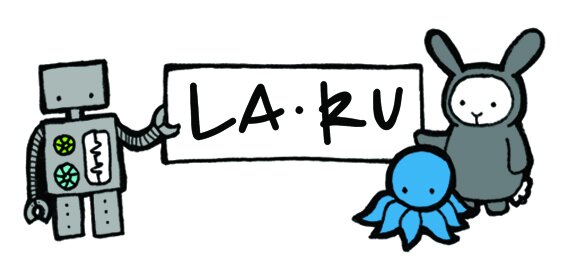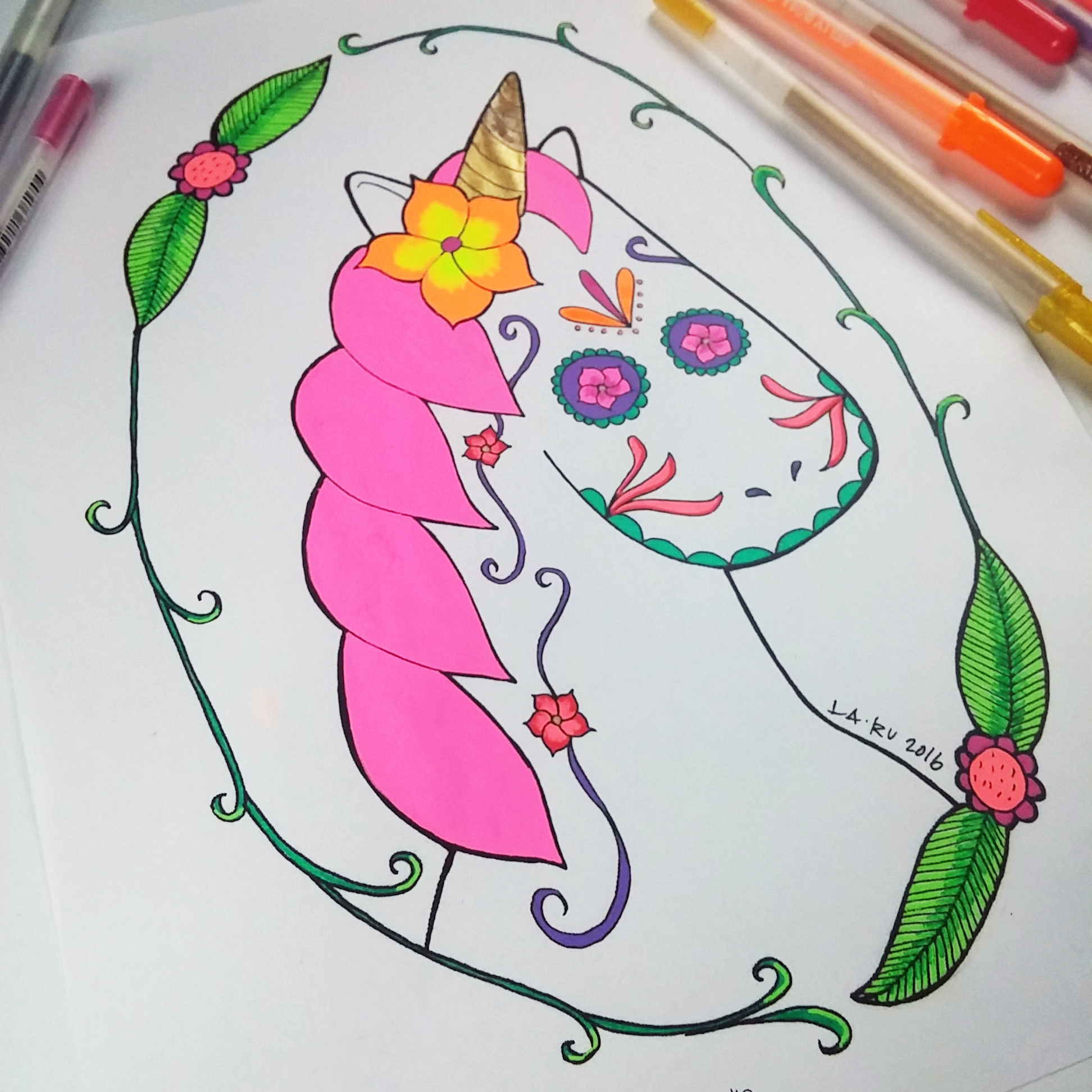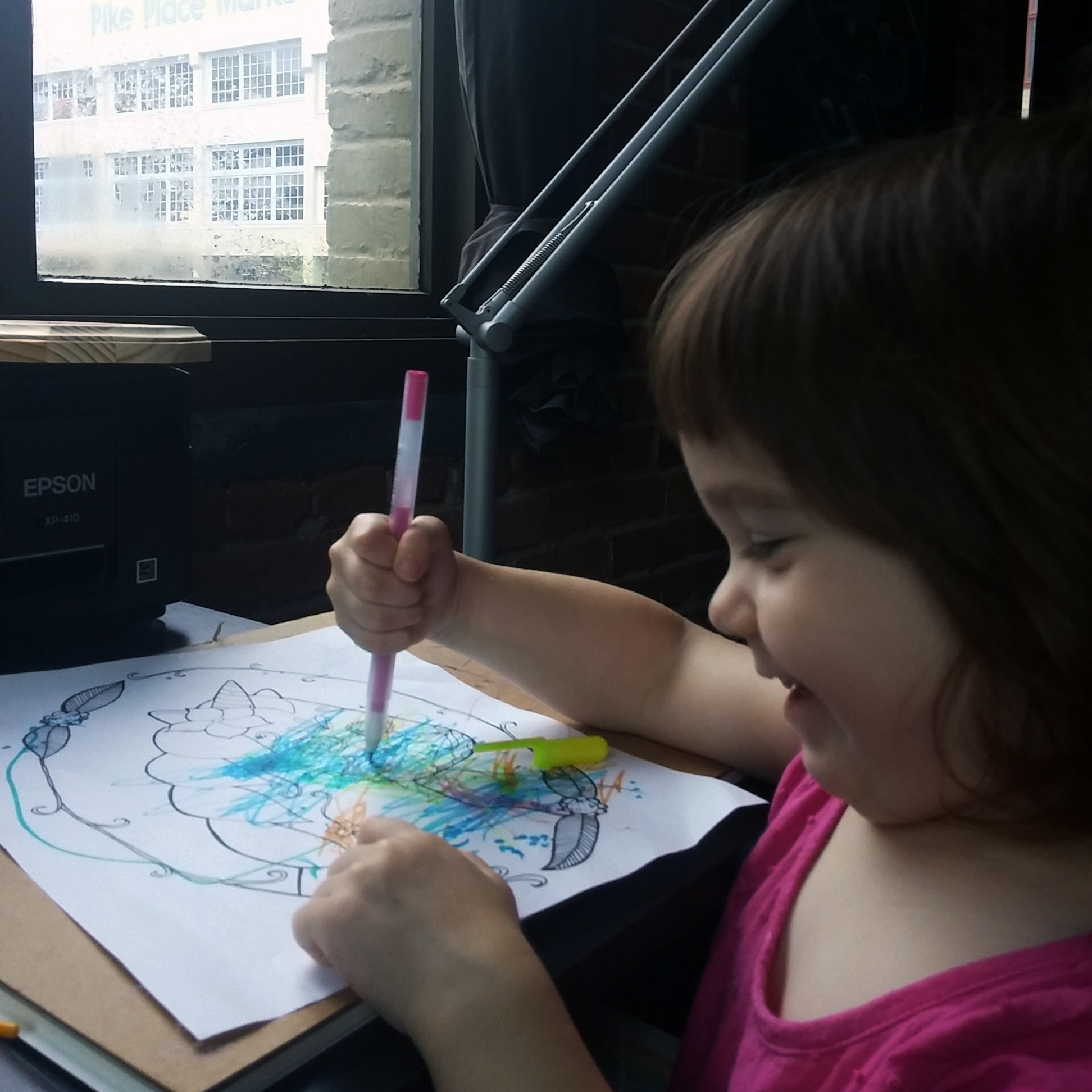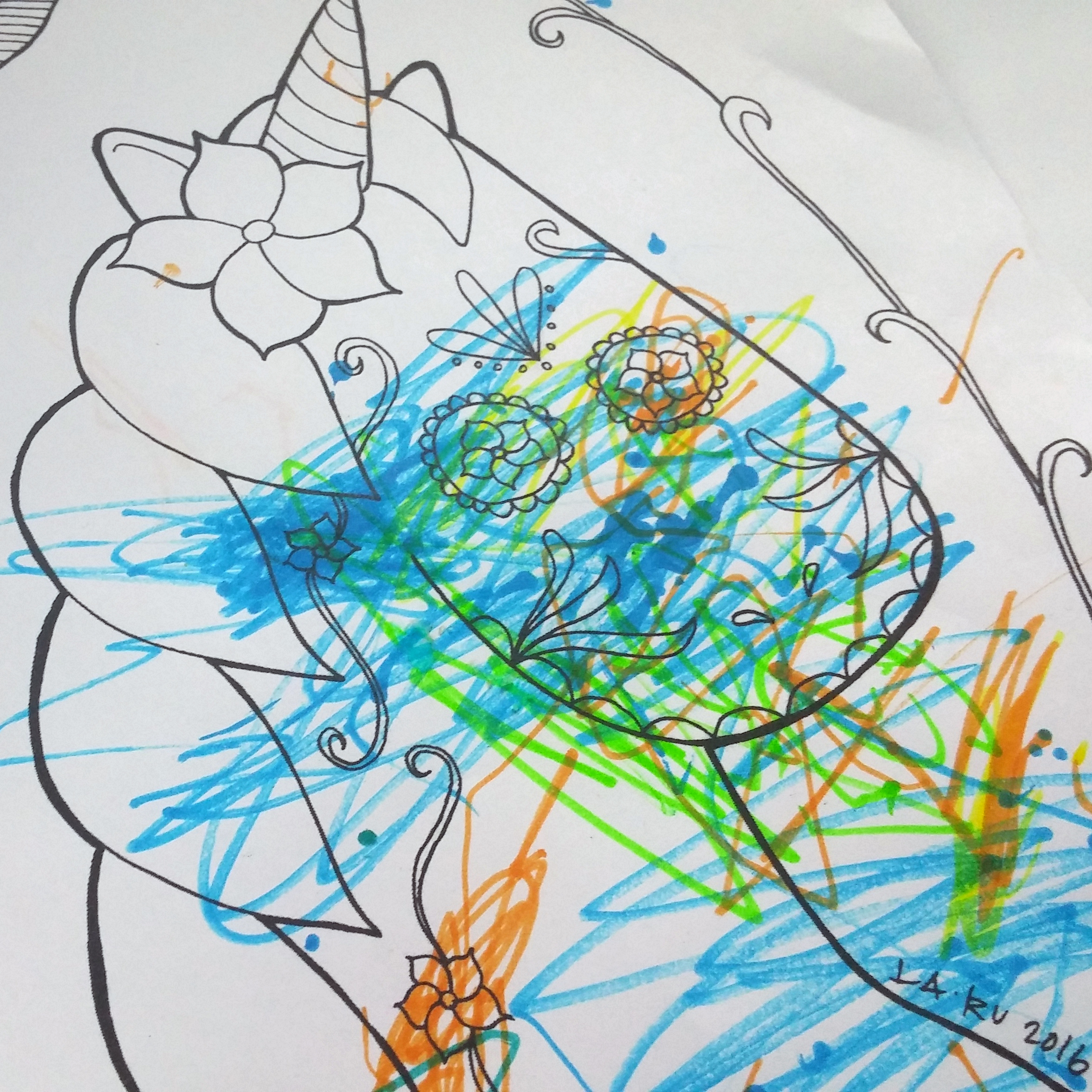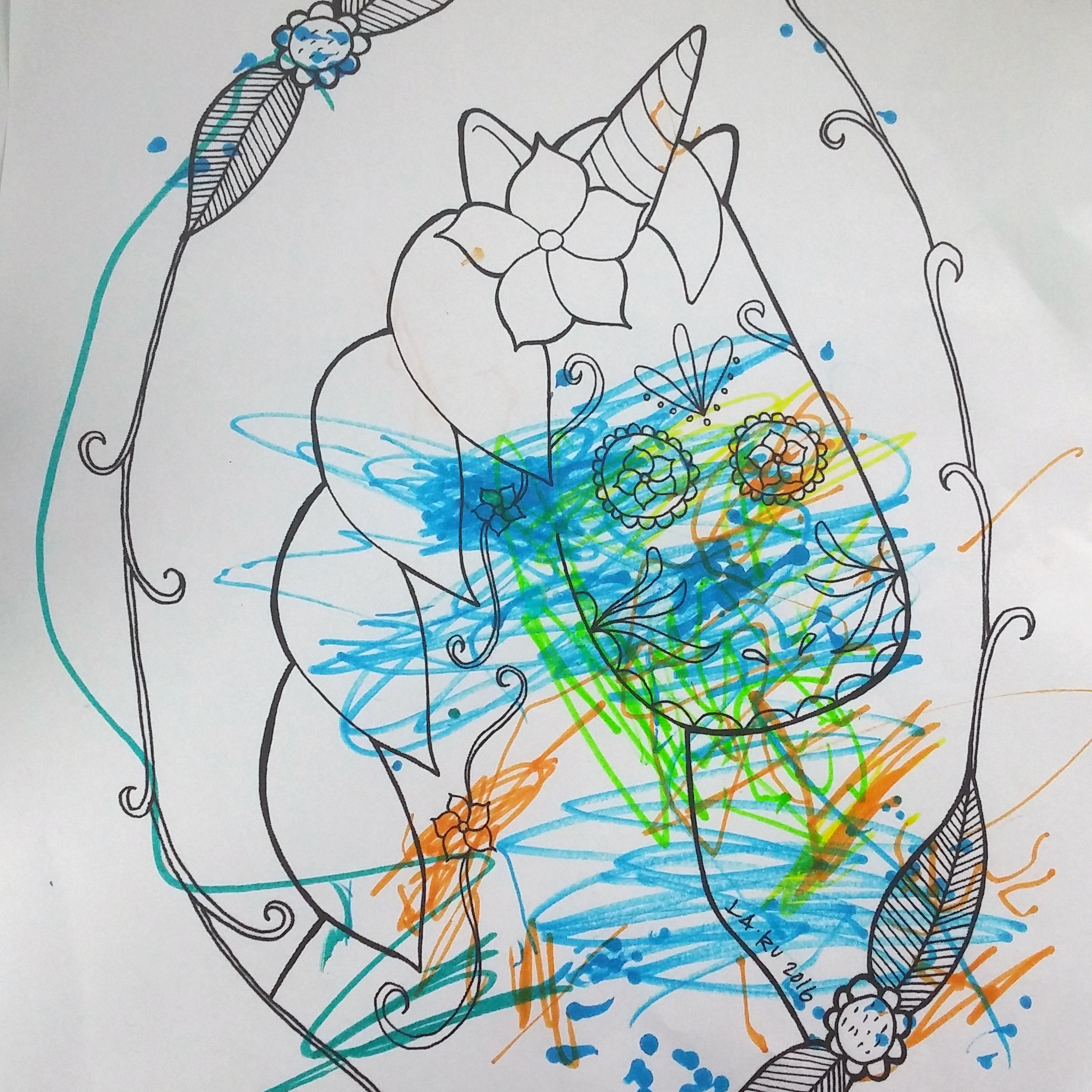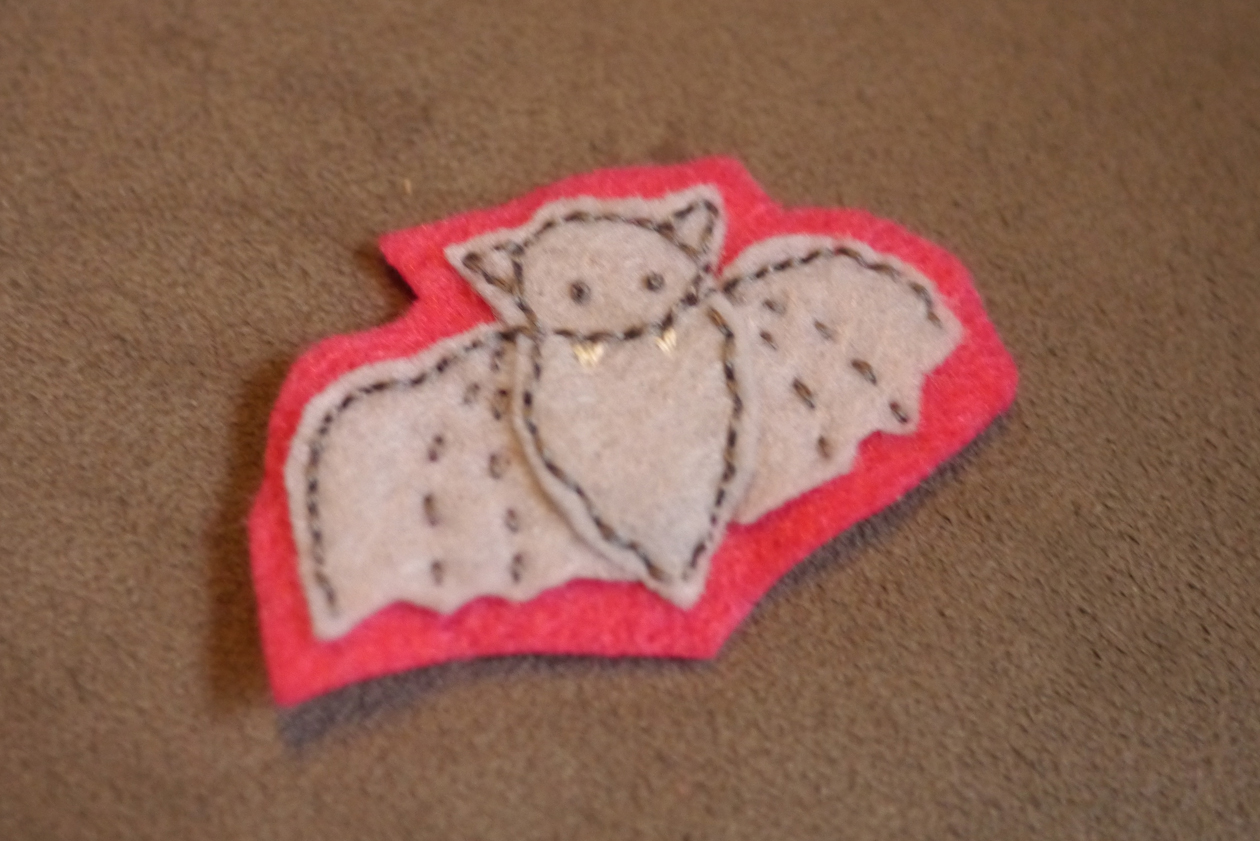Enjoy a free coloring sheet of a La Ru Day of the Dead Unicorn. Inspired by a Halloween window display I created for my shop Ugly Baby and La Ru.
Please post pictures on social media of your finished piece or your in progress shots. Be sure to tag @larudio on instagram or twitter or LaRu on facebook. On October 24th, 2016 I will randomly select a winner; you'll get a letter from me with a bunch of La Ru stickers!
This coloring sheet is for personal use only. It cannot be sold or created into another item to be sold.
Your contact information will not be sold or added to any lists; I will only use it to notify a winner. If you'd like to join my email list, fill out the La Ru VIP Club form to the right.
Happy coloring!
